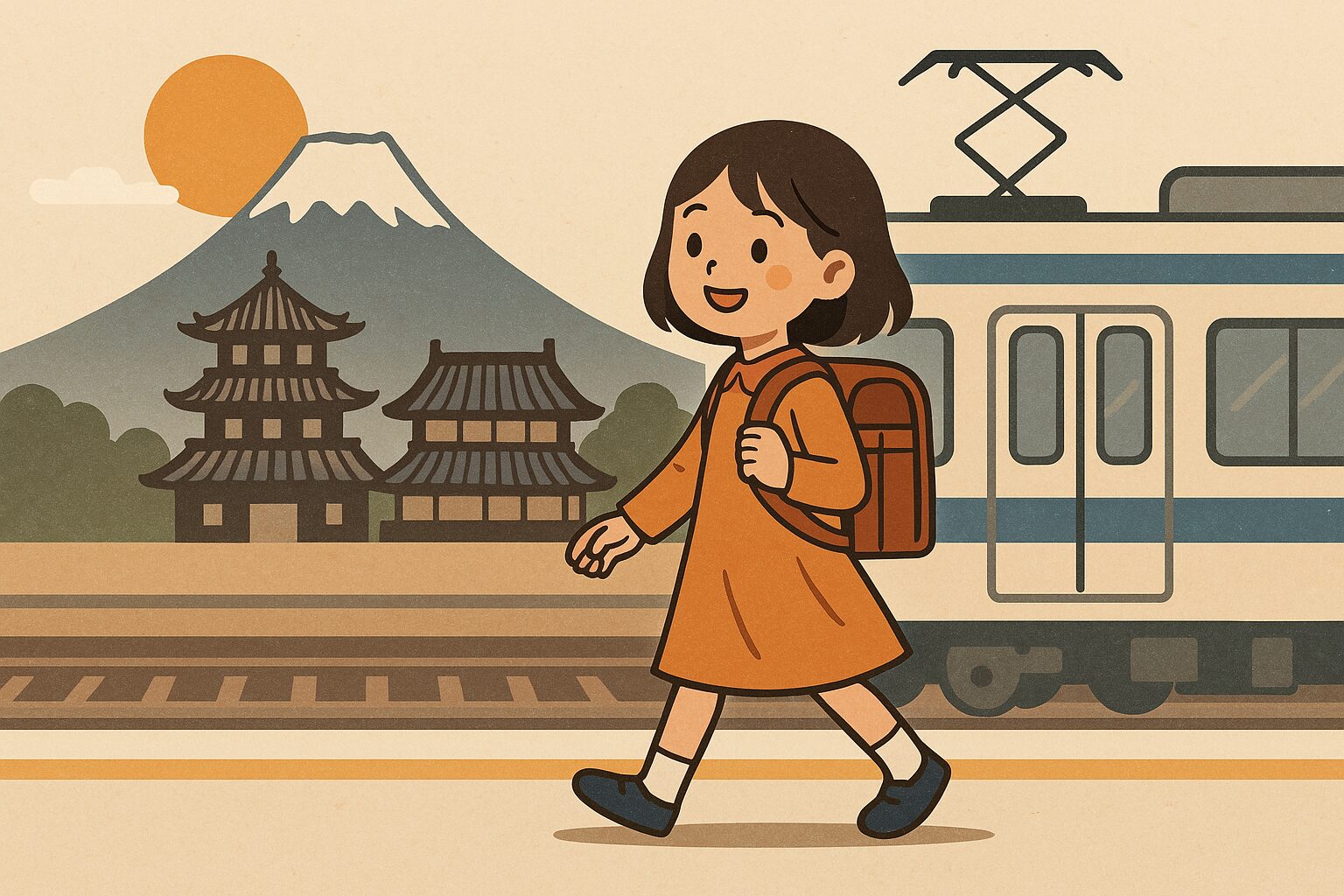✨ Introduction: Why Can Japanese Children Ride Trains Alone?
In Japan, it’s not uncommon to see elementary school children commuting alone by train or walking to school without adult supervision. For many foreigners, this is astonishing. But it reflects something deeper: Japan is one of the safest countries in the world—not just today, but historically.
To understand this, we can look back to the Edo period (1603–1868), a time when Japan was already known for its remarkably peaceful and orderly society. One story from that era, involving a young maid and a miraculous journey to the Ise Grand Shrine, offers a glimpse into the moral fabric that has long underpinned Japanese life.
🧳 The Story: A Maid, a Coin, and a Pilgrimage
During the Edo period, it was common for ordinary people—including farmers and merchants—to travel across the country for religious pilgrimages. Among the most popular was the Ise Mairi, a journey to the Ise Grand Shrine. Records show that as many as five million people made the pilgrimage annually—one in five Japanese at the time.
One such traveler was a young maid who longed to visit Ise. One day, she saw her employer place a gold coin (a koban) in a box. Overcome with desire, she secretly took the coin and set off on her journey, fearing she might be pursued.
Soon, her straw sandals broke, and she had no small change to buy new ones. She tried to exchange the koban for coins, but no one would accept it. Then, a stranger approached her and offered to help. He claimed he would exchange the koban for smaller coins and handed her two nibu-kin (smaller gold coins) as a deposit. She reluctantly gave him the koban.
The man disappeared. She feared she had been swindled. But then he returned—angrily shouting that the koban was counterfeit. A heated argument broke out. Locals gathered, listened to both sides, and concluded that the man was a con artist. He fled, and the crowd told the maid to keep the two coins and continue her journey.
She reached Ise safely and later returned home. When she confessed everything, her employer was shocked—not because she had stolen the coin, but because the koban was indeed fake. He said, “It’s as if the gods themselves granted you the means to fulfill your wish.”
🧭 What This Story Tells Us About Edo-Era Japan
This tale, recorded in the historical text Kotonoma Koto Akashigatari, is more than a curious anecdote. It reveals several key aspects of Edo-period society:
- Widespread Travel: Despite being a pre-modern society, Edo Japan had a vibrant culture of domestic travel. Pilgrimages were common, and even farmers and servants could journey across the country.
- Trust and Community: The fact that a young woman could travel alone, and that bystanders intervened to protect her, speaks volumes about the communal sense of justice and safety.
- Moral Complexity: Even the con man showed a flicker of conscience—he returned, after all. And the employer, rather than punishing the maid, saw the hand of fate or divine will.
- Spiritual Worldview: The belief that the gods intervened to help the maid reflects a worldview where morality, fate, and community are deeply intertwined.
🛡️ Edo Japan: A Surprisingly Safe Society
Foreign visitors to Japan during the Edo period were often amazed by the country’s safety. The German physician Philipp Franz von Siebold wrote of unmanned roadside stalls where goods were sold on the honor system. Swedish botanist Carl Thunberg noted that theft and robbery were almost nonexistent. People could travel without fear, even in large cities like Edo (now Tokyo), which had over a million residents.
This safety was not enforced solely by harsh laws, but by a shared cultural ethic. People were taught from childhood what was right and wrong—not just by rules, but by example. Communities were self-governing, and public order was maintained through mutual trust and responsibility.
🌱 From Edo to Today: A Legacy of Safety
The values seen in this Edo-era story—mutual respect, personal responsibility, and community support—still shape Japanese society today. That’s why children can ride trains alone. That’s why lost wallets are returned. That’s why even in a bustling metropolis, people feel safe.
Japan’s safety is not just a matter of policing or surveillance. It’s a cultural inheritance, passed down through generations, rooted in stories like that of the maid and the koban. It’s a quiet strength—one that continues to inspire admiration around the world.
Would you like me to help turn this into a bilingual blog post or add visuals to accompany the story? I can also help create a historical timeline or infographic to show how Edo-period values continue to influence modern Japan.



コメント